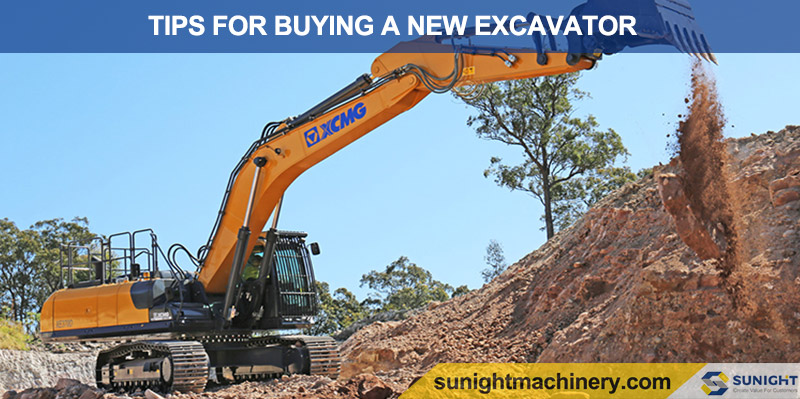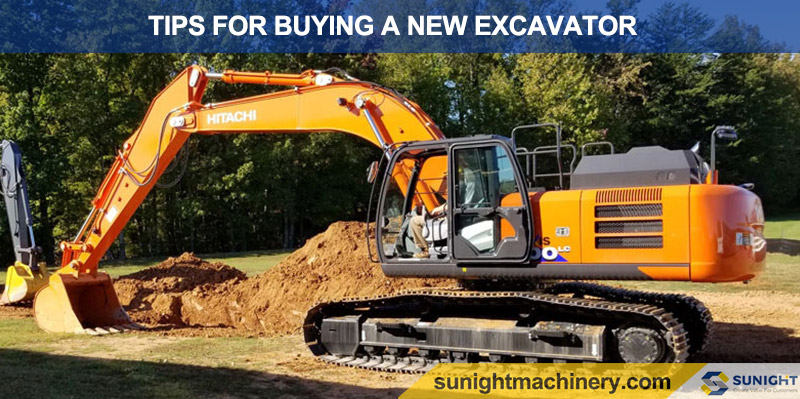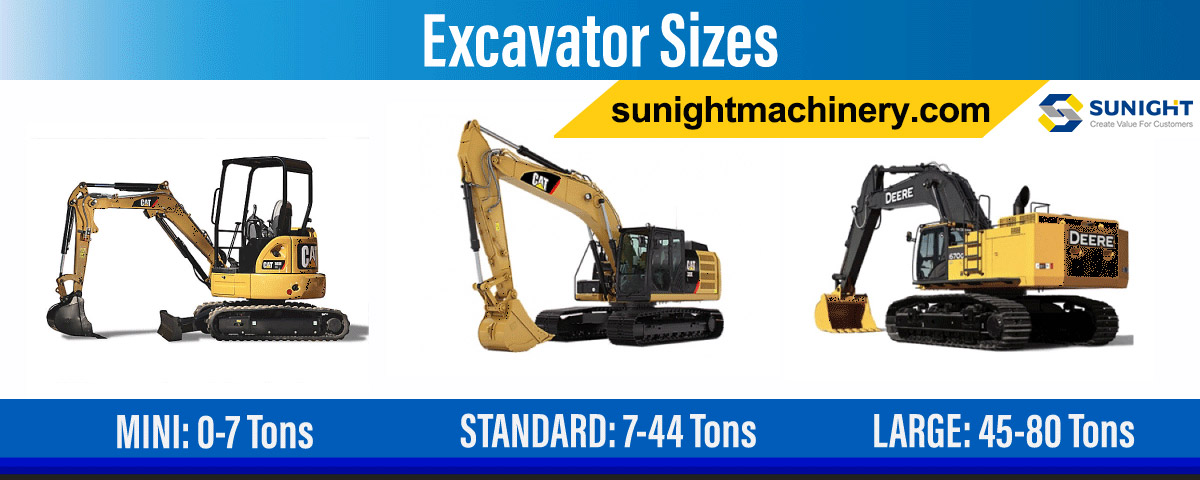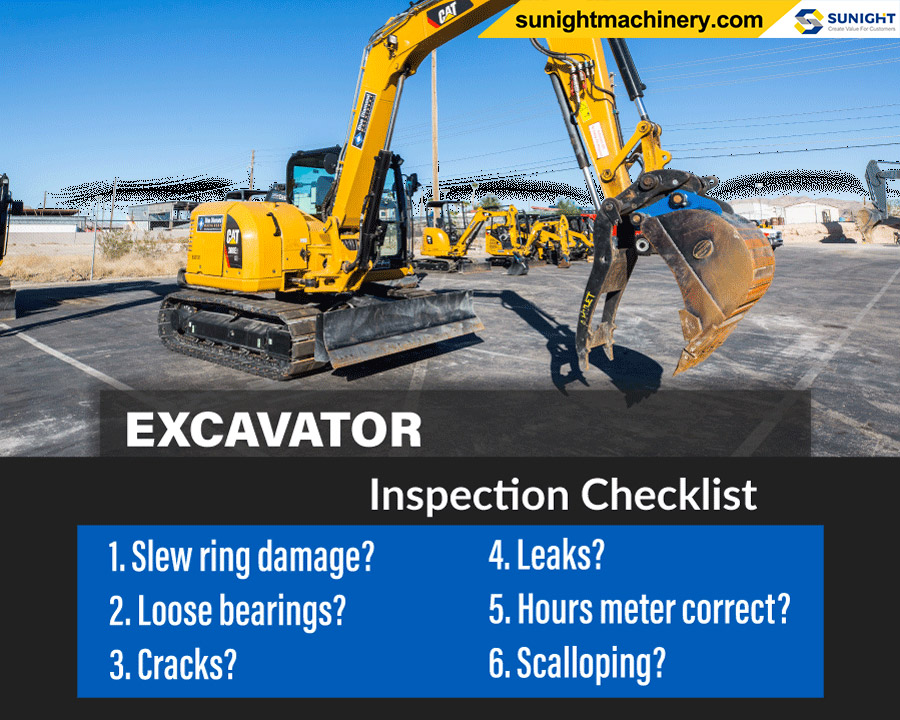When it comes to purchasing a new excavator, there are many important items to consider. Understanding the right specs and knowing what to look for will have the greatest impact on the productivity of your business. Here is a list of ten important considerations for buying a new excavator.
It’s important to match the right size machine to the tasks at hand. Crawler excavators are generally grouped into three size-classes; compact/mini (0 – 6 metric tons; or <13,227 pounds), mid-size (6 – 10 metric tons; or 13,227 – 22,046 pounds) and standard/full-size (10 – 90 metric tons; or 22,046 – 198,416 pounds). Knowing your applications, the spec requirements for the job (bucket capacity, etc.) and what size machine you need is the first step towards making a buying decision.
Consider the attachments you plan on working with, and understand the hydraulic flows required for each. Equipping your excavator with the right attachments will give you versatility to get the most out of your investment. Also, be sure to ask about the machine’s coupler options. This will often help determine the scope and variety of attachments you can use with the machine.
When purchasing a new machine, transportation is always an important consideration. Depending on your current fleet, a larger trailer may be needed to haul your new excavator. You may also need to consider traveling on weight-limited roads bridges, as well as the necessary certification for your drivers.
Buying the right sized excavator for your application and region is critical, as there are ancillary transportation and owning/operating costs that go with the purchase of a new machine that vary from state to state.
Consider the needs of the operator when purchasing a new excavator. Most operators have a strong preference between ISO or SAE control patterns. To make things easier, many new excavator models offer an easy pattern control selector that allows the operator to adjust the machine to their preference.
When you’re in the cab of an excavator for ten hours a day, comfort and ergonomics are critical for productivity. Look for features in the cab that will keep your operators comfortable and focused on the job.
It’s important to understand the many track options available to you, as well as the impact that they can have on the productivity of the machine. Most compact excavators will come standard with rubber tracks, which are designed to minimize surface damage during travel and operation in the residential, street and in-building applications that they are often used. Rubber tracks wear out more quickly than steel, so there are a large variety of aftermarket track types available with varying widths and tread depth.
Mid and full-sized excavators are typically equipped with steel tracks, and also come in varying sizes, widths and depths. When discussing track options with your equipment dealer, be sure to consider the ground conditions and the type of applications in which you intend to utilize the machine. Wider tracks with deep grousers offer the most traction for heavy digging in softer ground conditions.
Today’s Tier 4 Final excavators are equipped with a variety of engine types and after-treatment technologies, and knowing the differences, as well as the impact that they can have on your operation, is essential when making a purchasing decision. Ask your equipment dealer about the benefits and maintenance procedures associated with the different types of Tier 4 Final engines.
Today’s excavators are loaded with additional features, so make sure that you are aware of what’s available to you when you decide to make a purchase. Features like selectable power modes and auto-idle can have a real impact on fuel savings and overall operating costs.
Choosing a dealer should be a long-term commitment. Your dealer is who you will rely upon throughout the lifetime of your equipment when you need parts, service and repairs. Look for a knowledgeable dealer with a robust service department, who has partnered with manufacturers that have reliable parts distribution networks. The best manufacturers provide regular training for their dealer technicians and sales staff, and have training resources available at all times.
When you’re ready to purchase your new excavator, be sure to talk to your dealer about machine warranties and available extended maintenance contracts. When it comes to purchasing new equipment, protecting your investment is one of the most important considerations. Most manufacturers offer standard warranties on their equipment, but a premium service/maintenance program will make a significant impact on your overall cost of ownership.

Whether buying an excavator new or used, it's important to do your homework beforehand so that you can make an informed purchasing decision. Below are several questions to ask yourself as well as an inspection checklist to use when examining the excavator for damage or excessive wear.
Excavators are grouped into three sizes (0-7 metric tons), standard (7-44 tons) and large (45-80 tons). Before you contact a seller, know the spec requirements for the job, as this will help you determine the size of machine you'll need. You'll also need to consider ahead of time whether or not you'll need any support attachments, such as couplers, rippers and hammers.
In addition to ensuring you have a trailer that is equipped to transport your excavator, you'll also need to make sure your drivers have the correct certification and that your trailer will be able to maneuver successfully to and from your jobsite. Certain roads and bridges, for example, may not allow oversized loads. What's more, these are all added expenses that you'll need to factor in when budgeting for your purchase.
It's wise to develop a long-term relationship with a dealer, particularly if you foresee needing to make any construction equipment purchases, rentals or repairs in the future. It's important that the heavy equipment company you choose is not only knowledgeable, but dependable and ethical as well.
In a perfect world, you wouldn't need to make an equipment inspection at all, and would be able to make a purchase sight unseen. But in the real world, even the most reputable and honest construction equipment sellers can sometimes make mistakes and overlook a major malfunction. Whether you are purchasing a new excavator or one with years of clocked operating hours, it's vital you conduct a thorough and careful inspection before making a purchasing agreement.
Slew rings are some of the most expensive items to replace or repair, so it's important that you ensure the slew ring in your hydraulic excavator hasn't been damaged before you sign the purchasing paperwork. This is particularly important if you're purchasing a used excavator, as poor machine maintenance—such as insufficient lubrication or overloading—can lead to early slew ring failure. During your inspection, make sure to: Rotate the housing to a quarter turn and check for any play or movement.
Pins and bearings should be tight, especially in the excavator stick and bucket connection points. It's important to check this, as any looseness, play or movement in the excavator's connection points could affect the machine's accuracy.
Check for any cracks or dents in the excavator, particularly in the following areas: The boom and stick - Check for cracks in the connection point welds between the boom and stick and the stick and the bucket. If you spot any cracks, know this could be a sign that the boom or stick will need to be replaced. Undercarriage - Note any dents or damage in the excavator's undercarriage, as this likely means the machine wasn't used as recommended. The operator may have been careless or the machine may have been in an accident. Either way, this could be a sign of internal damage.
Inspect the hydraulic pump compartment for leaks.This should include inspecting the hoses, cylinders and lines.
If you have any question about the hours meter reading, check the control pedals. If you note wear that seems excessive, this could mean that the meter is broken or has been altered and that the machine has logged more hours than the meter is displaying.
Scalloping (wear that occurs between the bucket teeth, in the shape of half moons) indicates that the excavator has a reduced cutting force. While this occurs normally over time and doesn't necessarily mean that the bucket needs to be replaced, it is something to consider when evaluating the overall value of the machine.